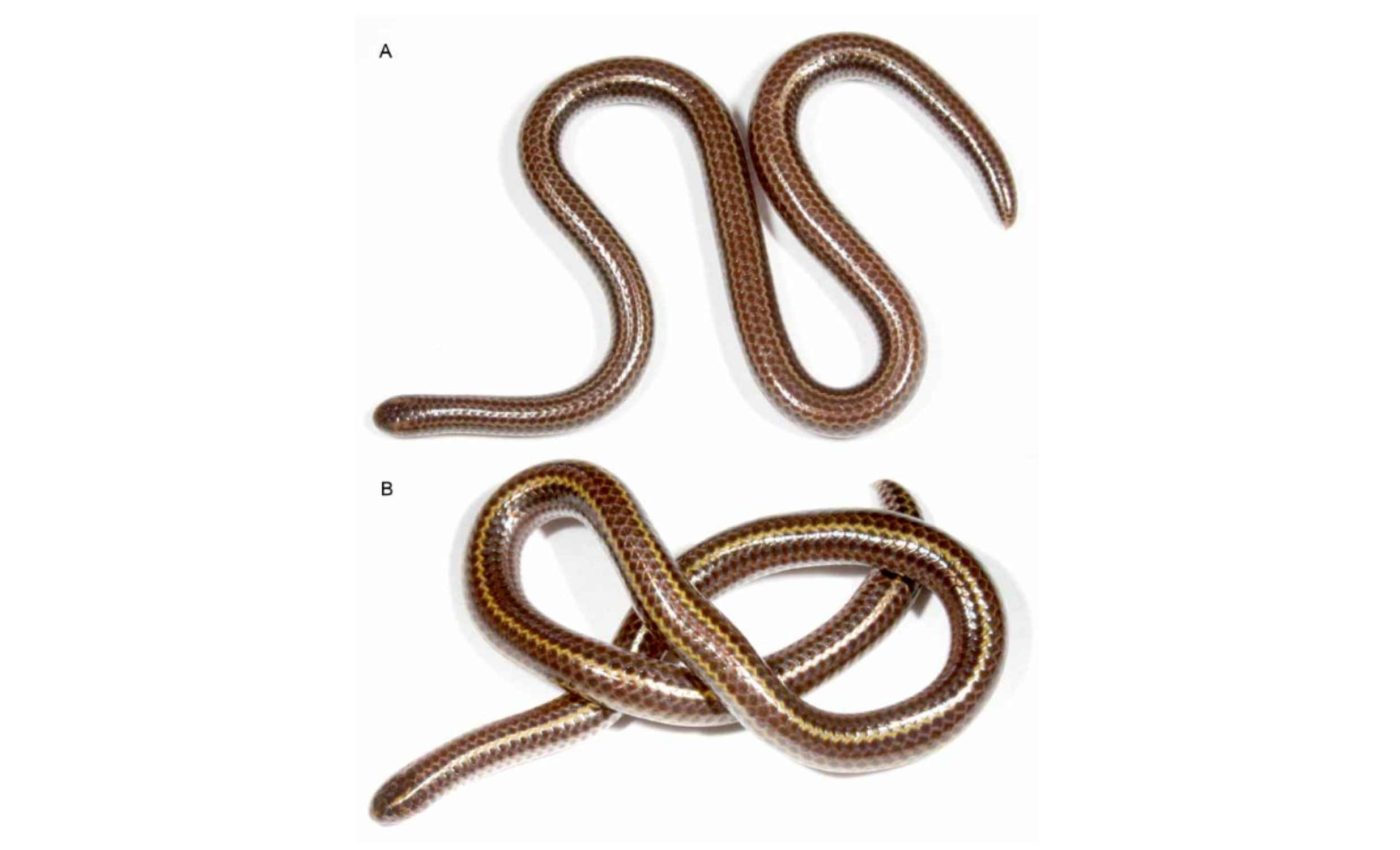
World's smallest threadsnake, thought to be extinct for 20 years, has been rediscovered
The Barbados threadsnake is tiny, secretive, and easy to miss in leaf litter. It is endemic to Barbados, but hasn’t been seen for 20 years. So, every verified record carries extra weight for the island and confirms that a unique line of life is still present and needs care.
Rediscoveries like this one show how careful fieldwork can correct assumptions faster than rumors spread. Clear evidence is better than guesses, and it shapes decisions on where to protect habitat.
Barbados threadsnake found
Connor Blades, a project officer with the Barbados Ministry of the Environment and National Beautification, worked with Re:wild on the field surveys that led to this find. He is part of a national effort to document and conserve Barbados’ endemic reptiles.
A local team lifted a rock in central Barbados and saw a slender, dark snake beside an earthworm. Staff documented the animal and returned it to the same forest patch.
Notes from the field helped define a narrower set of places to search next time.
Adults reach only about 3 to 4 inches (8 to 10 centimeters) in length and weigh a fraction of an ounce. The 2008 species paper documented that small size and reported a single, elongated egg in a pregnant female.
The same work explained why Barbados threadsnakes may have a practical lower size limit. Any smaller, and hatchlings would struggle to leave the egg with enough reserves and to feed on tiny prey like ant larvae.
The threadsnake belongs to a clade of burrowing animals that rely on narrow skulls and simple body shapes to move through soil. That body plan is efficient underground but makes external differences subtle.
Telling look-alike species apart
Barbados hosts a widespread invasive species that looks similar, the Brahminy blind snake Indotyphlops braminus. It often confuses identifications in the field when searches rely on brief views.
The threadsnake shows pale orange lines along the back, eyes set toward the side of the head, and a small rostral scale on the snout. The Brahminy lacks the distinct dorsal lines and presents a slightly different head shape.
The field team leaned on microscopy and careful morphology checks to be certain. Those steps reduced the odds of confusing the two species in future surveys.
Small island, big pressures
Scientists worry about habitat because most natural forest on the island is long gone. Some estimates indicate that roughly 98 percent of primary forest has been cleared for agriculture since the colonial era began.
That history matters for this Barbados threadsnake species that likely survived in small pockets of remaining forest and gullies. Fragmentation can thin populations and make it harder for males and females to meet.
This snake depends on moist soil and stable leaf litter where ants and termites raise their young. Those microhabitats shrink when small forest patches are cut, grazed, or dried by edge effects.
At the same time, the invasive blind snake uses a very different strategy. It reproduces by parthenogenesis, so females produce fertile eggs without mating, a trait documented with triploid genomes in recent research.
Why the Barbados threadsnake matters
The rediscovery anchors conservation work in real places and times instead of rumor. It validates recent surveys that focused on small, shaded microhabitats and on soil communities where ants and termites are abundant.
The confirmation also trims uncertainty in local checklists and museum records. Clear identifications help prevent the two look-alike species from being lumped together.
Funding and policy usually follow evidence. A verified record gives weight to proposals that protect small forest patches and the network of gullies that hold leaf litter and moisture.
Watching without harming
Barbados threadsnakes live under rocks, logs, and compact leaf litter, and it spends most of the day below the surface. Turning cover objects can crush animals or leave them exposed to heat and predators.
Field teams use a simple rule to reduce risk. Lift gently, check quickly, replace the object exactly as found, and leave the site as if no one had been there.
Community science can help by ruling out misidentifications. Short video, a clear shot of the head, and images of the back can support expert review after the animal has been left undisturbed.
Long gaps between records do not always mean a species is gone. They can reflect low numbers, secretive habits, and the fact that most searches happen where access is easy and people already work.
Focused surveys switch the odds. Teams that narrow the time of day, weather, and microhabitat can find species that general searches miss.
Rediscoveries also reset risk estimates. Managers can move from speculation to specific actions that match the places and seasons where the animal still occurs.
Protecting the Barbados threadsnake
The current surveys give a clearer window of time and weather when the Barbados threadsnake is most active near the surface. That makes future checks more efficient and less disruptive to the habitat.
Managers can map likely sites by cross referencing forest remnants, moisture, and ant-rich soils. Protecting a few acres at a time adds up when the target animal measures only a few inches.
Education is part of the plan as well. Outreach reduces intentional harm and raises the odds that a chance encounter turns into a documented record that assists the next survey.
The threadsnake’s story is rooted in precise field work and patience. That care pays off when a rare species is still present but has been silent for long stretches of time.
The study is published in Zootaxa.
—–
Like what you read? Subscribe to our newsletter for engaging articles, exclusive content, and the latest updates.
Check us out on EarthSnap, a free app brought to you by Eric Ralls and Earth.com.
—–













